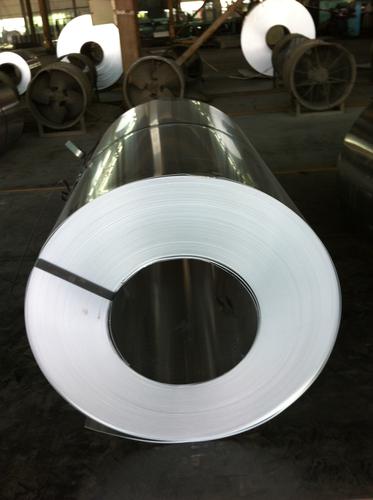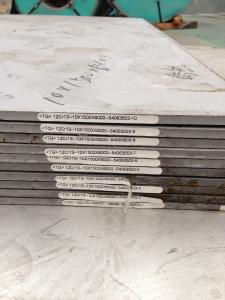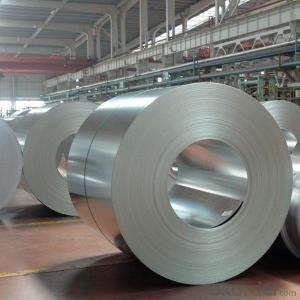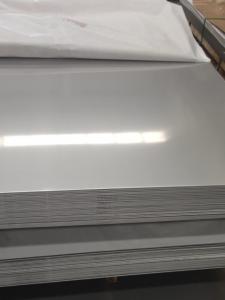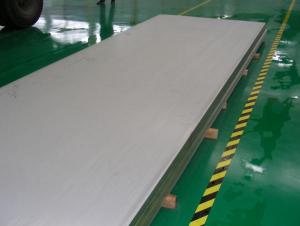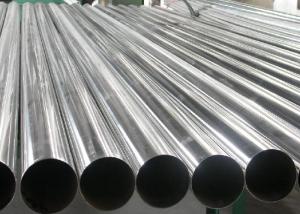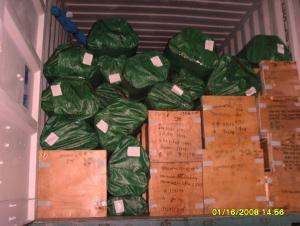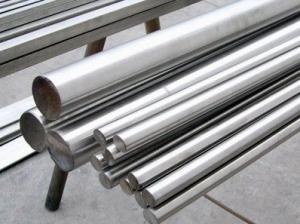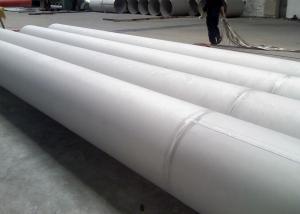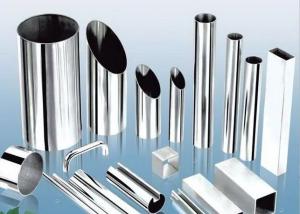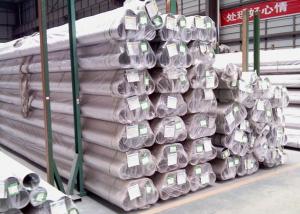Stainless Steel Sheet With Cold Rolled Grade Best Selling
- Loading Port:
- Shanghai
- Payment Terms:
- TT or LC
- Min Order Qty:
- 1 m.t.
- Supply Capability:
- 2000 m.t./month
OKorder Service Pledge
OKorder Financial Service
You Might Also Like
1.Structure of Product Description
hot rolled and Cold rolled Stainless steel sheet is widely used in the field of construction field and decoration field, etc. There are many different grades, such as: 200 series, 300 series, 400 series, 900series, etc. The grade are as follows: 201, 202, 301, 304, 316, 410, 420, 430, etc.
The surface is including 2B, BA, Mirror Finish, Checkered, etc.
2. Main features of the product
a. Competitive price
c. Shortest service.
3. Image.
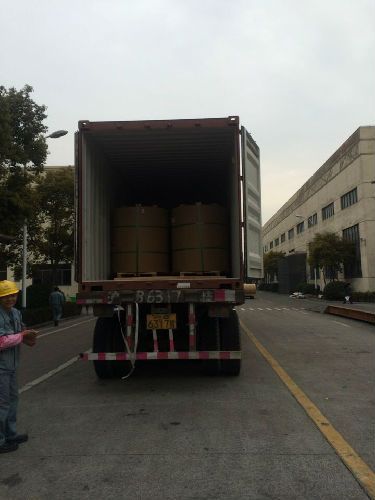
4. Product detailed sizes:
1000mm*2000mm, 1000*1000mm,1200mm*1200mm,
1219mm*2438mm,1220mm*2440mm,1500mm*3000mm,etc.
5. FAQ:
What is the quality standard?
---Usually our standard is GB3880-2006 or else.
What is the width range?
---It is from 500mm to 2500mm, etc.
What is the length range?
---It is from 2000mm to 6000mm, etc.
What is the MOQ for your products yet?
---Normally it is around 3 tons/each size.
How many tons did you export in one year?
---Normally it is around 9000 tons totally.
Where is your client from?
---Normally it is from VIETNAM,ENGLAND,CANADA,BANGLADESH,SINGAPORE, ETC.
What is your mainly products?
---Normally they are stainless steel sheet, stainless steel coil, our price is very competitiver, and we also have some stocks in warehouse now,
stainless steel checkered sheet, stainless steel mirror finished sheet, color coated stainless steel sheet, etc.
- Q: How do you prevent fingerprints and smudges on stainless steel sheets?
- To prevent fingerprints and smudges on stainless steel sheets, you can use the following methods: 1. Clean with a microfiber cloth: Use a soft microfiber cloth to wipe down the stainless steel surface regularly. This will help remove any fingerprints or smudges quickly without leaving scratches. 2. Use a mild detergent: Mix a few drops of mild dish soap with warm water and dampen the microfiber cloth. Gently wipe the stainless steel surface in the direction of the grain, then rinse and dry with a clean cloth. 3. Apply stainless steel cleaner: There are specific stainless steel cleaners available in the market. Follow the instructions on the product and apply it to the surface using a soft cloth. This cleaner will help repel fingerprints and leave a protective coating on the stainless steel. 4. Avoid harsh cleaners and abrasive materials: Avoid using abrasive cleaning pads, steel wool, or harsh chemicals as they can scratch the stainless steel surface. Stick to gentle cleaning methods to maintain its shine. 5. Use gloves: When handling stainless steel sheets, wear gloves to prevent leaving fingerprints or smudges on the surface. By following these preventive measures, you can keep stainless steel sheets free from fingerprints and smudges, ensuring a clean and polished appearance.
- Q: Can stainless steel sheets be embossed or textured?
- Yes, stainless steel sheets can be embossed or textured. This process involves imprinting patterns or designs onto the surface of the stainless steel sheets, adding visual interest and texture to the material.
- Q: Are stainless steel sheets resistant to abrasion?
- Yes, stainless steel sheets are highly resistant to abrasion.
- Q: What are the benefits of using perforated stainless steel sheets in ventilation systems?
- Perforated stainless steel sheets offer several benefits in ventilation systems. Firstly, they allow for efficient airflow by allowing air to pass through the small holes, ensuring proper ventilation and preventing any blockages. Secondly, the stainless steel material is highly durable and resistant to corrosion, ensuring long-term performance in various environments. Additionally, these sheets provide a sleek and aesthetically pleasing appearance, making them suitable for both industrial and commercial applications. Lastly, the perforations can be customized to meet specific airflow requirements, offering flexibility in design and functionality.
- Q: How do you prevent galling on stainless steel sheets?
- To prevent galling on stainless steel sheets, it is important to use lubricants or anti-seize compounds during the manufacturing or assembly process. This helps reduce friction and surface adhesion, minimizing the risk of galling. Additionally, using proper cutting tools and techniques, such as slow speeds and low feed rates, can also help prevent galling.
- Q: How many steps do I need for stamping the stainless steel plate?
- Stamping molding (Stamping forming), is on press and die force on plate, strip, pipe and profiles, the plastic deformation or separation, thus obtaining the required shape and size of the workpiece (stamping molding method). Stamping billets are mainly hot-rolled and cold-rolled steel plates and steel strips.
- Q: What is the minimum thickness available for stainless steel sheets?
- The minimum thickness of stainless steel sheets can differ depending on the grade and manufacturer. Nevertheless, typically stainless steel sheets are readily obtainable in thicknesses that span from 0.4mm to 6mm. Certain manufacturers might even offer thinner sheets, like 0.3mm, for particular applications. To ascertain the precise minimum thickness that suits your specific needs, it is crucial to consult with the supplier or manufacturer.
- Q: What is the difference between 304 and 316 stainless steel sheets?
- The main difference between 304 and 316 stainless steel sheets is their composition and corrosion resistance. 304 stainless steel contains 18% chromium and 8% nickel, while 316 stainless steel contains 16% chromium, 10% nickel, and 2% molybdenum. This additional molybdenum in 316 stainless steel improves its corrosion resistance, making it more suitable for use in marine environments or applications exposed to harsh chemicals. Therefore, 316 stainless steel sheets are generally considered more corrosion resistant than 304 stainless steel sheets.
- Q: Are stainless steel sheets suitable for pharmaceutical applications?
- Indeed, pharmaceutical applications find stainless steel sheets to be highly suitable. The pharmaceutical industry extensively employs stainless steel due to its exceptional resistance to corrosion, hygienic qualities, and effortless cleanability. It remains non-reactive, guaranteeing the purity of pharmaceutical products by preventing any interaction with drugs or chemicals. Moreover, stainless steel sheets exhibit resistance to elevated temperatures, a pivotal aspect for sterilization procedures. Additionally, stainless steel proves to be a durable and long-lasting material, rendering it appropriate for pharmaceutical equipment and storage systems. In summary, stainless steel sheets encompass all the necessary characteristics demanded by pharmaceutical applications, thus establishing them as a favored choice within the industry.
- Q: Are stainless steel sheets suitable for solar panel frames?
- Indeed, solar panel frames can be made from stainless steel sheets. Stainless steel, being both robust and long-lasting, possesses exceptional resistance to corrosion, rendering it highly suitable for outdoor purposes such as solar panel frames. It can endure severe weather conditions, encompassing elevated temperatures, humidity, and UV radiation, without succumbing to rust or corrosion. Moreover, stainless steel exhibits a remarkable strength-to-weight ratio, enabling it to uphold the weight of solar panels while preserving its structural integrity. Its attractive appearance and minimal upkeep demands further contribute to its widespread preference for solar panel frames.
Send your message to us
Stainless Steel Sheet With Cold Rolled Grade Best Selling
- Loading Port:
- Shanghai
- Payment Terms:
- TT or LC
- Min Order Qty:
- 1 m.t.
- Supply Capability:
- 2000 m.t./month
OKorder Service Pledge
OKorder Financial Service
Similar products
Hot products
Hot Searches
Related keywords



